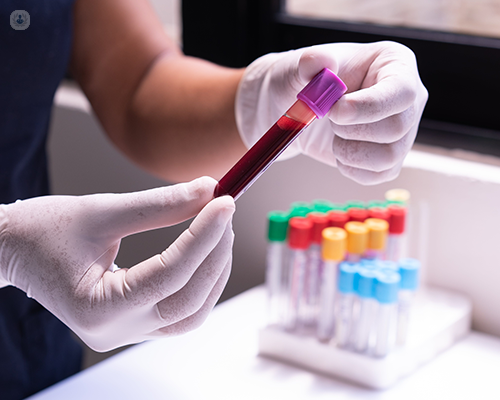Sex hormone binding globulin (SHBG)
What is analysed?
Sex hormone binding globulin (SHBG) is a glycoprotein synthesized by the liver that tightly binds to the sex hormones testosterone, estradiol and dihydrotestosterone. SHBG transports these in an inactive form through the bloodstream.
The SHBG test measures SHBG levels in the blood.

What does the result mean?
The result indicates the concentration of SHBG in the blood.
Why conduct the analysis?
The SHBG test is conducted to help diagnose conditions related to hormonal imbalances, such as polycystic ovary syndrome (PCOS) or hyperandrogenism (excess androgen), as well as to monitor the effectiveness of hormone replacement therapy (HRT).
When to conduct the analysis?
The SHBG test is conducted when symptoms related to hormonal imbalances, such as irregular menstrual cycles, hirsutism, acne or fertility problems, are observed.
What sample is required?
A blood sample is used for the analysis of SHBG levels. The blood is drawn from a vein, usually in the arm.
Is any prior preparation necessary?
Patients should fast for 8-12 hours before the blood sample is taken. In addition, patients should also inform a healthcare professional about any medications being taken, as they could affect results.
How is it performed?
The collected blood sample is sent to a laboratory, where it is analysed using immunoassay techniques to quantify SHBG levels in the blood.
What are the normal values?
| Sex | Normal SHBG levels (mmol/l) |
|---|---|
| Male | 13-71 |
| Female | 18-114 |
What does having altered values mean?
- Elevated levels: Raised SHBG levels may indicate hormonal imbalances linked to conditions like hyperthyroidism, anorexia nervosa, or oestrogen excess. This can result in decreased bioavailability of sex hormones.
- Low levels: Low SHBG levels may indicate hormonal imbalances linked to conditions like PCOS, obesity, or insulin resistance. This can result in increased bioavailability of sex hormones.